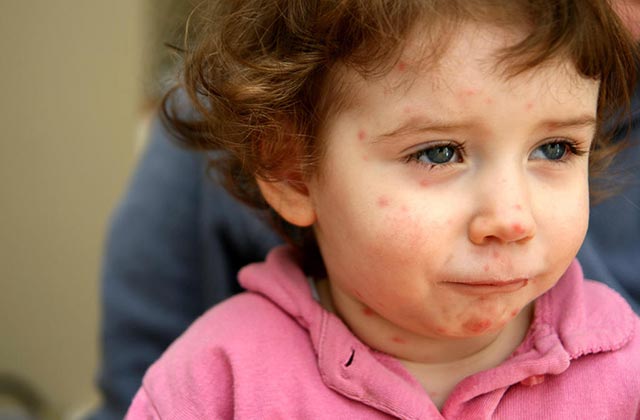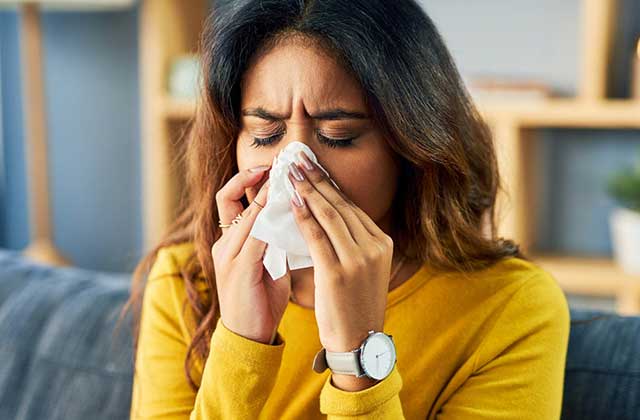Have you noticed any discoloration on your back or chest? If you are prone to sweat and moisture, chances are there is a fungal infection on your skin.
Tinea versicolor is a type of yeast or fungal infection characterized by slightly raised splotches that are either lighter or darker than your actual skin color. It commonly appears on your chest, shoulders, and back – the areas of your body that usually sweats a lot. Also known as pityriasis versicolor, the discolored spots usually start small and then grow into larger ones. The affected areas can be flaky or scaly and rarely, it causes itching.
This type of fungal or yeast infection happens because of any of the following factors:
- Having oiling skin
- Sweating a lot
- Living in a hot climate
- Having a weak immune system
- Fluctuating hormones
Tinea versicolor is not communicable. You cannot infect other people with it. It is common to have during summer but if it is not treated, the infection can spread to other parts of your body and thrive for months. Add to that the fact that you would not usually notice it’s there until it has already formed patches on your back or chest.
Even though having this skin infection is harmless, you really would not like how it would look like on your skin. That is why there different treatments and remedies that you can try to get rid of tinea versicolor once and for all.
Here are some ways:
Topical Antifungal Treatments
One of the most effective ways of getting rid of tinea versicolor is the application of topical antifungal medicines. Research reveals that these types of treatments have a positive clinical response rate – approximately 70%.
The products are rubbed on the affected area directly and are sold as shampoo, cream, lotion, soap, or foam. These antifungal topical treatments usually inhibit the growth of fungi, thus preventing its spread to other parts of your body. There are over –the –counter medications with clotrimazole, miconazole, ketoconazole, terbinafine, selenium sulfide, or zinc-pyrithione that you can readily buy. But stronger ones are prescribed by doctors, specifically, dermatologists. The doctor will also prescribe how often you need to apply these products.
Oral Antifungal Treatments
If your skin infection is more severe or if is recurring, the doctor may advise you to take antifungal pills. It’s a fast and simple solution to tinea versicolor. This option can usually quickly kill thriving yeast or fungi on your skin. However, like other pills, you must also carefully monitor any side effects with the help of your doctor. Oral treatments can get rid of the fungi and yeast living on your skin so that it would not spread to other areas, but discolored spots may take months to disappear.
Home Remedies
There are also natural ways that you can try to treat tinea versicolor. If you are a fan of doing it yourself, here are safe and less expensive home treatments that you can try:
- Dandruff shampoos. Find a shampoo with one to 2 percent ketoconazole ingredient. Every time you take a bath, foam the shampoo and apply it to the affected area. Leave on for at least five minutes before rinsing off to get maximum benefits. Repeat this for as long as six to eight weeks to see visible changes on your skin.
- Sulfur salicylic acid shampoos. This is also another cheap over-the-counter remedy you can try. The salicylic acid and sulfur ingredients in this shampoo are effective keratolytic agents. Meaning, it helps your skin shed dead skin cells easily. Apply the shampoo every night as lotion and leave on for at least five minutes before rinsing off. Do this for at least two weeks until you see changes in the affected areas.
- Selsun Blue. Selsun Blue is a type of selenium sulfide shampoo. Apply it directly to the discolored patches and leave on skin for at least fifteen minutes. Rinse it off. Repeat twice a day for at least two weeks for maximum results.
- Tea Tree Oil. Tea tree oil is a natural remedy for tinea versicolor since it has strong anti-fungal properties. Using this will prevent the fungi from spreading to other parts of your body and will also lessen recurrence. Apply the oil on the affected spots in the morning and evening. This should be done for at least one month to effectively get rid of the fungi.
- Coconut and Oregano Oil. The fatty acids found in coconut oil make it a natural anti-fungal remedy. Oregano oils also act as a natural fungicide. Mixing them both will give you a natural antifungal remedy that will help stop tinea versicolor on its tracks. Combine half a teaspoon of coconut oil and four drops of oregano oil. Using a cotton applicator or cotton bud, apply the solution to all your tinea spots. Do this twice a day – once in the morning and then in the evening. Leave it on the skin all day or all night.
If you are struggling to get rid of tinea versicolor, there are a lot of treatments that you can try. If you need the help of the doctor to diagnose and treat this skin infection, try calling an online doctor BC for assistance.




